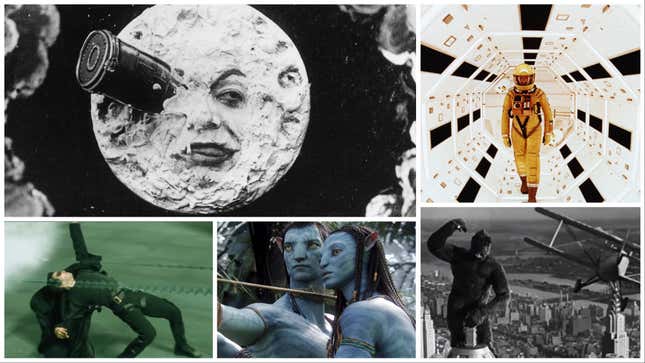
Though they may seem a recent phenomenon, special-effects driven movies have been with us since the dawn of cinema. From the moment filmmakers realized that the camera and the editing room offered the potential for manipulation of images, directors have tried to push that manipulation as far as they could. Images once relegated to the imagination have been recreated on the big screen, sometimes with more success than others, but almost always with the goal of creating a more convincing illusion.
Considering what we can accomplish today on our cell phones, it’s hard to imagine there was a time when a simple split screen or a matte painting was considered a gasp-producing effect. Over the decades, filmmakers discovered rudimentary effects like dissolves and wipes before eventually moving on to more modernized visual trickery that involved blue screens and rotoscoping. Indeed, the story of film is the story of innovations, from the magic tricks of Georges Méliès to the Marvel Cinematic Universe. So check out our list of 17 movies that changed the special effects game, and remember that in 1923 the parting of the Red Sea in Cecil B. DeMille’s The Ten Commandments—as cheesy as it may seem now—was pretty freakin’ spectacular.